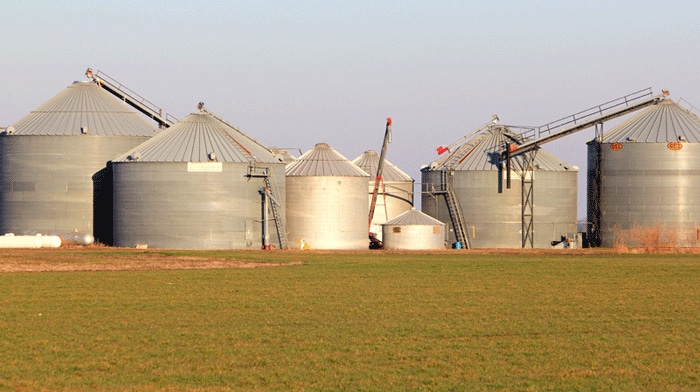
With the start of the 2014 growing season, officials from the agricultural industry and state and federal safety representatives are reminding grain bin owners, co-ops and elevator operators of the importance of compliance with all relevant state and federal rules and regulations regarding workplace safety.
According to the National Safety Council, agriculture remains one of the most hazardous industries in the United States. In 1992, approximately 37 fatalities occurred per 100,000 agricultural workers and an estimated 140,000 disabling injuries to farm workers were experienced overall.
While the types and causes of those accidents and fatalities are varied, accidents associated with the operation of grain storage bins represent one of the most dangerous aspects of the industry.
For more information on farm safety and other issues, please check out Southwest Farm Press Daily and receive the latest news right to your inbox.
The U.S. Department of Labor's Occupational Safety and Health Organization (OSHA) has established a number of mandated rules and regulations required for grain bin handlers, primarily safety procedures that must be followed by commercial grain operations.
Lockout-tag-out
"One of the areas of safety concerns are the lockout-tag-out operations required at commercial grain bin facilities. OSHA regulations dictate the procedures that must be followed," said Luis Garcia, a safety education specialist with the Texas Cotton Ginners Trust.
Garcia was one of several speakers at a recent Coastal Bend Grain Storage and Handlers Safety Conference in Sinton.
"Grain bin employers are required to implement procedures for use of tags and locks, which will prevent the inadvertent application of energy or motion to equipment being repaired, serviced, or adjusted, (and) which could result in employee injury or death. These locks and tags shall be removed in accordance with procedures only by the employee installing them," Garcia explained. "This represents a change from the way we used to do business. In the old days, before the new procedures were put into place, a supervisor could install or remove a lock, but that has all changed."
Garcia says in a grain bin operation several reasons dictate the need for a lockout-tag-out (LOTO) procedure. Servicing or the need to repair equipment, clogged augers or moist grain that has clumped together or bridged on side walls are two of the more common reasons that a worker may need to enter the bin.
"Before that can happen a number of procedures must be followed, including logging who and why and when that worker must enter the bin, and even then only after lockout-tag-out procedures have taken place," Garcia added.
Worker training
According to OSHA regulations, employers are also required to train each worker and ensure that they know, understand, and are able to follow the applicable provisions of the hazardous energy control procedures. Workers must be trained in the purpose and function of the energy control program and have the knowledge and skills required for the safe application, usage and removal of the energy control devices.
OSHA claims compliance with the lockout-tag-out standard prevents an estimated 120 fatalities and 50,000 injuries each year.
"OSHA requires that employers assign each authorized employee a standardized lock with a single key for locking out equipment. They must also maintain documentation on file that lists the specific lock assigned to each employee and must keep duplicate keys in a secured location for emergency use only. While the equipment is locked out, the employee whose key locked the machinery must retain the key in his or her possession at all times, and only the person who applied the lock is authorized to remove it," Garcia said.
He said OSHA requires employers to review lockout-tag-out procedures annually to ensure the program’s continued effectiveness, and they must conduct reviews with all employees who are authorized to lockout equipment. Employers should also review tag-out procedures with all authorized employees, as well as those workers whose jobs are affected by lockout-tag-out procedures.
Don't rush
Texas Cotton Ginners Trust works with a large number of grain storage and ginning operators and far too often accidents, injury and even fatalities occur because workers get in a rush and fail to properly lockout all equipment before performing service inside the bin. Failure to remove tools or personnel before the locks are removed and start up procedures resume also causes accidents inside grain bins.
"Also, I can tell you I have had the unfortunate obligation to be at a facility after an accident occurred and the first thing OSHA inspectors ask for is documentation on the training the employer provided those workers. There needs to be written documentation of training provided to every employee and on every piece of equipment at the facility. Your lockout-tag-out procedures and policy needs to be a comprehensive document and not a single page of instructions. You must provide a detailed procedure and OSHA investigators or inspectors are going to be looking at this carefully," he said.
Safety officials say retraining and review of lockout-tag-out procedures must happen at least once a year, but also if any policy or energy procedure has changed or if new employees have been added to replace authorized personnel. Retraining is also required if any piece of equipment in the chain has been updated or replaced.
More information about lockout-tag-out and other grain bin-related safety can be found at the OSHA website.
About the Author(s)
You May Also Like




